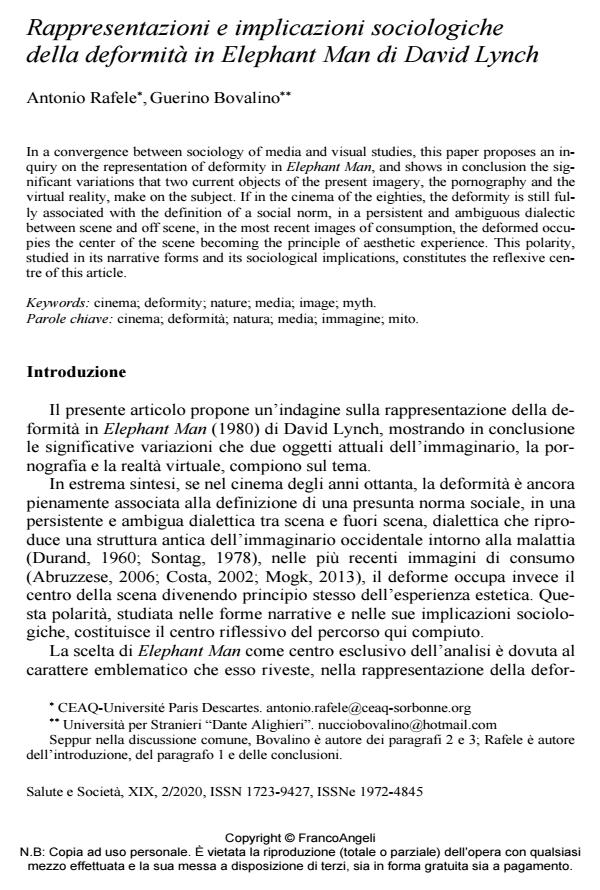Rappresentazioni e implicazioni sociologiche della deformità in Elephant Man di David Lynch
Journal title SALUTE E SOCIETÀ
Author/s Antonio Rafele, Guerino Bovalino
Publishing Year 2020 Issue 2020/2
Language Italian Pages 12 P. 44-55 File size 148 KB
DOI 10.3280/SES2020-002004
DOI is like a bar code for intellectual property: to have more infomation
click here
Below, you can see the article first page
If you want to buy this article in PDF format, you can do it, following the instructions to buy download credits

FrancoAngeli is member of Publishers International Linking Association, Inc (PILA), a not-for-profit association which run the CrossRef service enabling links to and from online scholarly content.
In a convergence between sociology of media and visual studies, this paper proposes an inquiryon the representation of deformity in Elephant Man, and shows in conclusion the significantvariations that two current objects of the present imagery, the pornography and thevirtual reality, make on the subject. If in the cinema of the eighties, the deformity is still fullyassociated with the definition of a social norm, in a persistent and ambiguous dialecticbetween scene and off scene, in the most recent images of consumption, the deformed occupiesthe center of the scene becoming the principle of aesthetic experience. This polarity,studied in its narrative forms and its sociological implications, constitutes the reflexive centreof this article.
Keywords: Cinema; deformity; nature; media; image; myth.
Antonio Rafele, Guerino Bovalino, Rappresentazioni e implicazioni sociologiche della deformità in Elephant Man di David Lynch in "SALUTE E SOCIETÀ" 2/2020, pp 44-55, DOI: 10.3280/SES2020-002004